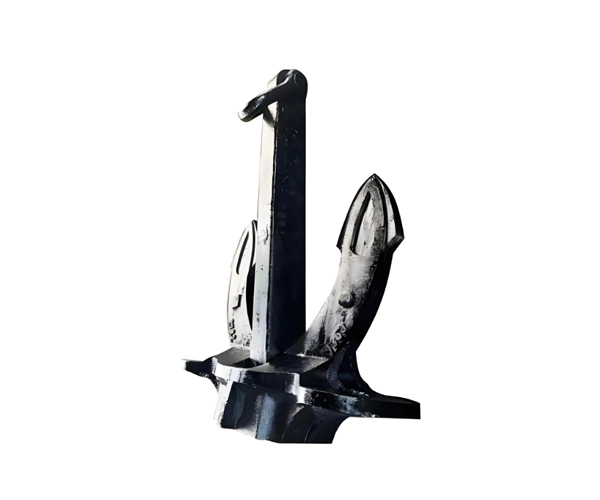Ever looked at a ship's anchor and thought, "They all look the same"? You're not alone. Most people assume an anchor is just... well, an anchor. But in the maritime world, there's a big difference between the stock anchor and the stockless anchor—and it's more than just how they look.
In this article, we'll break down the key differences, uses, advantages, and even throw in a bonus explanation of the Spek anchor, a popular variation of the stockless type. Anchors away!

Let's start with the old-school classic—the stock anchor, also called a traditional anchor or Admiralty anchor.
Has a horizontal crossbar (called a stock) at the top
Two large flukes (the "arms") that dig into the seabed
Looks like the stereotypical anchor you see in cartoons or tattoos
The stock ensures the anchor flukes turn and embed themselves deep into the seabed. It provides excellent holding power, especially in sandy or muddy bottoms.
Small boats and yachts
Emergency or secondary anchors
Some fishing vessels
Great holding in most seabeds
Simple design
Bulky and hard to store
Not ideal for large commercial ships
The stockless anchor is the modern, go-to choice for commercial shipping. It's used on everything from cargo ships to cruise liners.
No horizontal stock
Flukes pivot on a shank
Compact, symmetrical design
When dropped, the anchor relies on its weight and the pivoting motion of the flukes to dig into the seabed. It may not hold as tightly as a stock anchor, but it works well enough for most conditions—and it's much easier to handle.
Commercial cargo ships
Tankers and bulk carriers
Navy vessels
Easy to retrieve and stow
Fits perfectly into hawse pipes
Ideal for large ships
Less holding power in soft mud or loose sand
Needs more weight for the same performance as a stock anchor
Here's where things get interesting. The Spek anchor is a specific type of stockless anchor, often seen on modern commercial ships.
Asymmetrical design for better fluke orientation
One fluke is slightly wider than the other
Designed to dig into the seabed more reliably than standard stockless anchors
Better setting behavior: It bites into the seabed faster
More reliable: Less chance of dragging, especially in soft soils
Space-saving: Like other stockless anchors, it's easy to stow in the hawse pipe
So while all Spek anchors are stockless, not all stockless anchors are Spek anchors. It's a specialized upgrade, ideal for vessels that need a little extra holding power without sacrificing convenience.
| Feature | Stock Anchor | Stockless Anchor | Spek Anchor |
Has a stock? | Yes | No | No |
Holding power | High | Moderate | Moderate to high |
Ease of storage | Poor | Excellent | Excellent |
Used on | Small boats | Large ships | Large ships |
Weight-dependent? | Not much | Yes | Yes |
Special design? | Traditional | Standard | Improved fluke angle |
You need strong holding power
You sail a small boat or yacht
Storage space is not an issue
You're managing a large vessel
You need something easy to deploy and retrieve
You operate in harbors with moderate holding ground
You want the ease of a stockless anchor with better reliability
You're anchoring in soft or mixed seabeds
You want a modern, durable design that minimizes anchor dragging
Imagine you're captaining a large bulk carrier approaching a muddy river delta. You drop a traditional stockless anchor—but it drags. You try again. Still not holding.
With a Spek anchor, the improved fluke geometry helps it set quicker and stay put, even in loose seabeds. That small design tweak can prevent hours of repositioning and fuel waste.
The anchor world may seem simple on the surface, but there's a lot of engineering behind these heavy bits of metal.
If you're wondering about the difference between a stock anchor and a stockless anchor, remember:
Stock anchors are reliable but clunky.
Stockless anchors are modern and easy to handle.
Spek anchors give you the best of both worlds—compact storage and better performance.
Whether you're boating on weekends or managing an ocean-going freighter, knowing your anchor types can save time, fuel, and even prevent disasters.